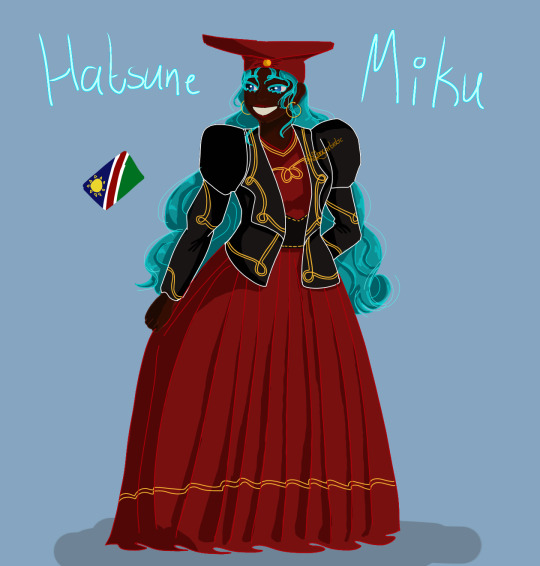#Namibia
Explore tagged Tumblr posts
Text
youtube
SWAKOPMUND CITY TOUR
5 notes
·
View notes
Text

" Golden Hour " // © getawayjonas
#Deadvlei#Sossusvlei#Namibia#nature#landscape#Deadtree#Desert#Dry Lake Bed#Golden Hour#photography#aesthetics#wanderlust#explore#follow#discover
56 notes
·
View notes
Text


Quiver Tree Forest… Despite the light pollution of neighboring city Keetmanshoop, the Milky Way was bright enough so one can say it’s a bortle 1-2 sky, which is actually the case everywhere in Namibia. (gear in tags, settings and process here )
eg_astrophotography
#Nikon D750 astro-modified on iOptron Sky Guider pro#Sigma Art 50mm f1.4#Genie Mini motion control device for panorama#astrophotography#astronomy#namibia#photography#curators on tumblr
3K notes
·
View notes
Text

Stunning Mottramite & Calcite from Tsumeb Mine, Namibia! 🌿💎
783 notes
·
View notes
Text

The Great Train Graveyard in Uyuni, Bolivia is a unique tourist attraction in addition to the famous salt flats and red lakes. The area is home to a collection of abandoned, vintage trains that were originally intended to expand the transportation network in the early 19th century. However, due to technical challenges and conflicts with local indigenous communities, the project was never completed. The trains were later used to transport minerals to port cities, but when the mineral resources depleted in the 1940s, the miners left and the trains were left to deteriorate in the desert. Over time, exposure to salty winds has caused the trains to corrode, creating the fascinating landscape of the Great Train Graveyard that exists today.
Credits: Keith Alexander
2K notes
·
View notes
Text




BBA Maria Nepembe
#namibia#black girl aesthetic#black girls are beautiful#black girl moodboard#black femininity#black women in luxury#black girls in luxury#style#black women#melanin beauty#melanin poppin#soft aesthetic#clothing#fashion
3K notes
·
View notes
Text

[https://www.inaturalist.org/observations/85993592]
Black-Backed Jackal || Lupulella mesomelas
Observed in Namibia
Least Concern in location of observation
Albino
#albino#jackal#canines#animals#nature#wildlife#photography#who cooks for queue? who cooks for queue all?#500#1k#Namibia
1K notes
·
View notes
Text

Oh my god! It’s Hatsune Miku!
Hello bunny, welcome to NAMIBIA
🐰🐰🐰🐰
I had to do this trend quickly! Herero Hatsune Miku isn’t something I ever thought I would make but good god I’m glad I did. Herero dresses have a LOT of variations in colours and patterns but im indecisive so I decided to use the more official colours lol
#hatsune miku#artists on tumblr#art#digital art#bunnyartistic#hastune miku fanart#African hatsune miku#Namibia#vocaloid
609 notes
·
View notes
Text

Southern sable antelope Hippotragus niger niger
Observed by bernis-bilderwelt_de, CC BY-NC
200 notes
·
View notes
Text

Under apartheid, publishing radical books was an act of resistance. Ravan Press, (founded in 1972 by Peter Randall and others) amplified banned voices, Black Consciousness writers, and critical texts that commercial publishers wouldn’t touch.
Ravan published the first novels by authors like J.M. Coetzee and Miriam Tlali, often risking raids and censorship to do so. Its work was one part of a broader liberation struggle across Southern Africa, building political awareness from the grassroots up.
See more primary sources in the Struggles for Freedom: Southern Africa collection on JSTOR, with an emphasis on materials from Botswana, Mozambique, Namibia, South Africa, and Zimbabwe.
Image: Books for Workers from Ravan Press. January 1, 1984. Digital Innovation South Africa.
#jstor#primary sources#anti apartheid#southern africa#zimbabwe#namibia#mozambique#south africa#botswana#ravan press#banned books#black consciousness#publishing
148 notes
·
View notes
Text
I already lost hope on may countries doing any good deeds, but God! Forget evil. How can you be this stupid. From the US and the UK bombing Yemen on the day of ICJ hearing to this ?! Have the collective IQ of leaders around the world gone to zero?!Much like their morality?

#palestine#free palestine#gaza#israel#palestinian lives matter#free gaza#social justice#genocide in gaza#jerusalem#save palestine#icj hearing#yemen#south africa#germany#us politics#uk#Namibia
1K notes
·
View notes
Text
Check out this stunning Dioptase from the Kaokoveld Plateau in Namibia’s Kunene Region! It’s got incredible coverage, oversized crystals, and a dazzling luster, all perched on a crisp white calcite matrix.
Video: The Focal Crystal
423 notes
·
View notes
Text
'GERMANY'S LOST PLOT OVER GAZA
Why can't Germany or any country in the EU call out Israel's genocide in Gaza? Irish MEP Mick Wallace asks the question as he rips into the bloc with this thumping speech at the European Parliament.
After rattling off the grim Palestinian death toll, he wonders how Berlin can stay silent, given its role in World War Two's holocaust and its little-known genocide in Africa. That saw over 75% of Namibia's Herero and Nama people killed, with their skulls shipped to Europe. Historians regard it as the first genocide of the 20th century.
Listen to Wallace's fiery soundbite. There were a few claps but mainly silence afterwards. Says it all.
#Germany#palestine#gaza#free palestine#israel#jerusalem#فلسطين#free gaza#israel is a terrorist state#i stand with palestine#eu#europe#Namibia#berlin#wwii#israel is committing genocide#israeli war crimes
2K notes
·
View notes
Text










"Вызывающе-оранжевенькая серия" от фотографа Moro. Россия (Москва).
"Provocatively orange series" by photographer Moro. Russia (Moscow).
Расположенный в Намибии Национальный парк Намиб-Науклуфт занимает часть пустыни Намиб и горной цепи Науклуфт. Пустыня Намиб считается самой старой на планете. Площадь парка составляет примерно 50 000 квадратных километров, и поэтому он является самым большим в Африке и четвертым по величине в мире. Создание Науклуфта началось в 1907 году. Самыми посещаемыми и наиболее известными частями парка являются Соссусфлей и Дедвлей.
Плато Соссусфлей— царство песчаных дюн, из которых около 90 % состоят из кварцевого песка. На некоторых из них заметны места с песком более тёмных красновато-чёрных оттенков. Пески появились здесь благодаря восточным ветрам, которые принесли их сюда из центральной части восточной Намибии. Некоторые песчинки покрыты оксидом железа, который придаёт им характерный красный цвет. В некоторых частях Соссусфлей вст��ечаются двухцветные красно-жёлтые дюны.
Дедвлей (Deadvlei) — это высохшее, после окружения дюнами, болото в русле этой же реки. На высохшей несколько сот лет назад глине серого цвета, остались деревья (верблюжья акация). В сухом жарком климате, древесина акаций окаменела. Деревья сохранили свой первородный вид, только без листьев.
Впечатляют своей красотой горы заповедника, выступающие прямо посреди пустыни. Их склоны довольно скалистые и укрыты редкой растительностью, оврагами и зелеными долинами. Эта область привлекает мало посетителей, так как является труднопроходимой. Она подходит для организованных серьезных походов.
Located in Namibia, the Namib-Naukluft National Park occupies part of the Namib Desert and the Naukluft Mountain Range. The Namib Desert is considered the oldest desert on the planet. The park covers an area of approximately 50,000 square kilometers, making it the largest park in Africa and the fourth largest in the world. The creation of the Naukluft began in 1907. The most visited and best known parts of the park are Sossusvlei and Deadvlei.
The Sossusvlei Plateau is a kingdom of sand dunes, about 90% of which are made up of quartz sand. Some of them have areas with darker reddish-black sand. The sands were formed here by easterly winds that brought them here from the central part of eastern Namibia. Some grains of sand are coated with iron oxide, which gives them a characteristic red color. In some parts of Sossusvlei, two-tone red and yellow dunes are found.
Deadvlei is a dried-up swamp in the same river bed after being surrounded by dunes. On the gray clay that dried up several hundred years ago, trees (camel acacia) remained. In the dry, hot climate, the acacia wood petrified. The trees retained their original appearance, only without leaves.
The mountains of the reserve, jutting out right in the middle of the desert, are impressive in their beauty. Their slopes are quite rocky and covered with sparse vegetation, ravines and green valleys. This area attracts few visitors, as it is difficult to pass. It is suitable for organized serious hikes.
Источник: /35photo.pro/photo_523453/#author/523453, //yii2.rutraveller.ru/place/11744, /35photo.pro/moro/, /ru.wikipedia.org/wiki/Намиб-Науклуфт, //awd.is/sossusvlei-dune-dedvlei-trees.
#photographer#Moro#Namibia#nature#landscape photography#Namib-Naukluft#landscape#desert#Sossusvlei#Deadvlei#dunes#sand#dead trees#sky#clouds#фотограф#Намибия#пейзаж#природа#Намиб-Науклуфт#пустыня#Соссусфлей#Дедвлей#дюны#мертвые деревья#песок#небо#тучи
173 notes
·
View notes
Text

Himba woman, Namibia, by Adam Koziol
#himba#namibia#africa#southern africa#folk clothing#traditional clothing#traditional fashion#cultural clothing
410 notes
·
View notes
Text

Excerpt from: Who Rules the World by Jewish Philosopher Noam Chomsky writing about what’s happening today 8 years ago! A blow to anyone who pretends that this started on October 7.
I urge everyone who cares about the Palestinian cause to read this book if you haven’t, add it to your 2024 list of books to read! The book doesn’t only deal with the Israeli-Palestinian “conflict” but it also helps you understand how the Unites States being the global superpower that it is since the end of World War II, meddles in other countries affairs after it appointed itself as “the World Police” then commits war crimes and gets away with it, while condemning and demonizing other countries for the same or lesser crimes. Quite relevant isn’t it?
#israel#free palestine#gaza#palestine#ceasefire#free gaza#ethnic cleansing#hamas#genocide#yemen#houthis#international court of justice#war crimes#south africa#germany#namibia
1K notes
·
View notes